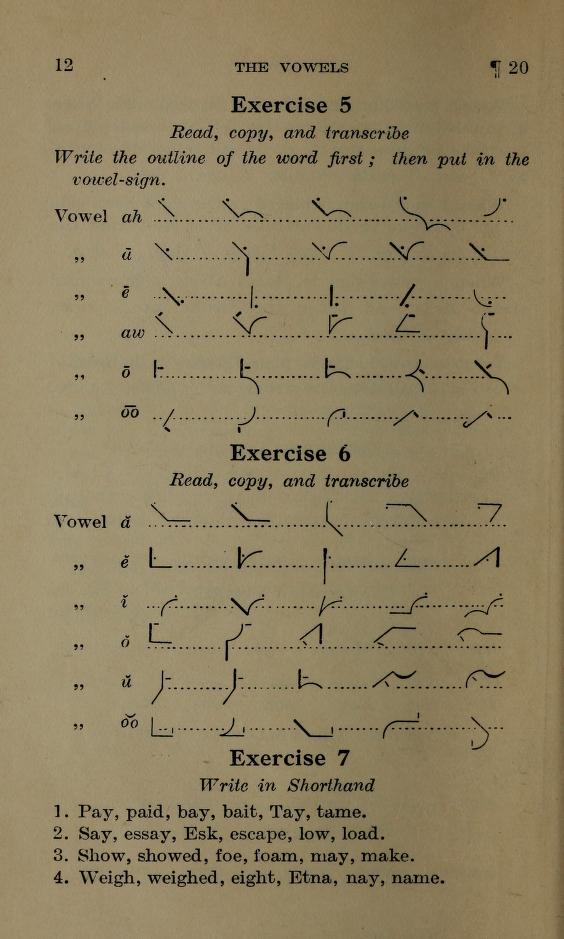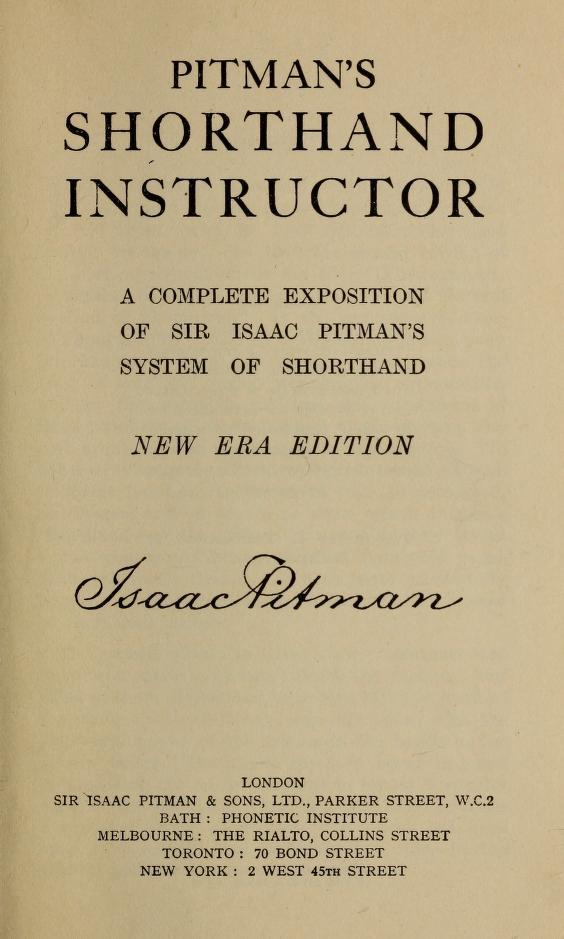Every Monday (even holiday Mondays!) we like to feature a text from the Fisher's extensive holdings on the Internet Archive. This week, Samantha takes a look at Pitman shorthand, a surprisingly popular method for making writing that much faster.
As we enter what feels like week one thousand of quarantine measures, you may be getting bored. Perhaps you’re looking for something new to learn or try, or something to distract you from yet another video conference. Well, we at the Fisher Library have the perfect solution for you: learning Pitman shorthand.
Isaac Pitman was a renowned English educator in the 19th century. In addition to being a passionate vegetarian and an English teacher, Pitman was also a linguistic inventor. Finding that written English was not efficient enough he dedicated many hours to inventing new, more efficient ways of writing English. The most famous of these is Pitman Shorthand, which he first published in 1837. To this day Pitman Shorthand is the most common shorthand used in the English language.
Shorthand is particularly useful in careers which involve writing a great deal very quickly. However, to use shorthand does require a great deal of study. Therefore, primers for Pitman Shorthand were often published to help learners along. The Pitman’s Shorthand Instructor: New Era Edition (London ; Toronto : Sir I. Pitman & Sons, 1920) is an excellent example of this genre of primers.

In addition to explanations of the logic behind this system of writing, this text is filled with exercises to help the learner practice their shorthand. To the uninitiated, these might look like errant doodles, as Pitman did not choose any symbols which resemble letters used in standard written English while designing his system. This system becomes even more complicated when multiple words are joined together in one continuous line of symbols. In addition to being mindful to the construction of the individuals words of which the phrase is comprised, one has to be careful about where on the line every stroke of the “phraseogram” is placed, as having a stroke even a millimeter or two out of place could change the meaning of the phrase entirely—or render it gibberish.
Looking at these exercises it may be difficult to imagine learning to write English in a completely different way, however, Pitman shorthand became a staple in the English-language business world for many decades. Using this writing system people were able to write much faster than by using standard English spelling, allowing businesses to operate with greater efficiency. This is not dissimilar from the use of abbreviation and text-based slang today, which people will often use to take notes in meetings or to speed up communication.

It is easy to take for granted what any language should look like or how it should function. Books such as this one challenge the assumption that English as we know it exists in its ideal form. The fact is that languages are always evolving, and writing systems tend to evolve alongside them. While Pitman’s Shorthand didn’t permanently revolutionise the way in which English is spelled, its enduring popularity suggests that perhaps there is room to improve how written English functions. Who knows what written English will look like in 100 or 200 years? Perhaps it won’t look too different from Pitman’s vision.
-Samantha Summers, TALint Student

